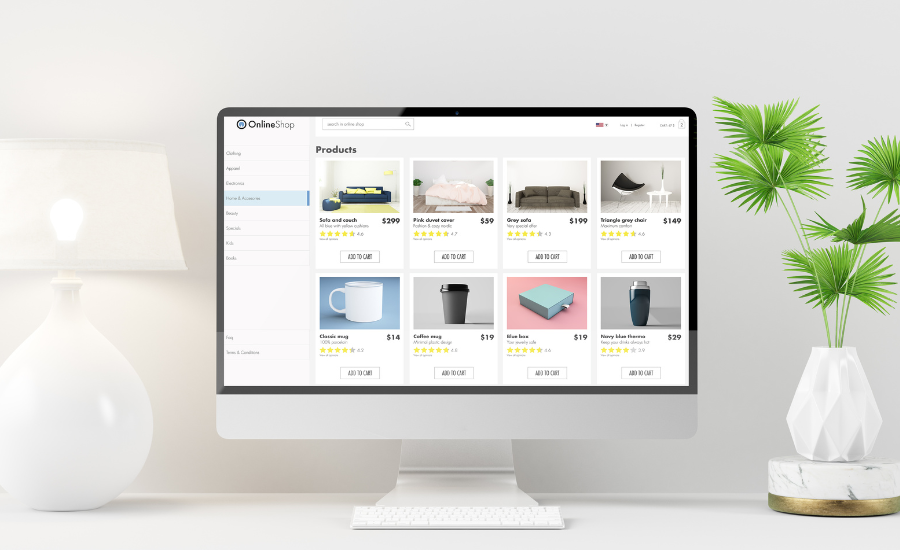Selling printables on Etsy is an accessible way to generate passive income. By creating digital products that customers can purchase and download instantly, you can earn money even while you sleep. This beginner’s guide will walk you through the essential steps to sell digital products on Etsy, create appealing printables, and effectively market your products to potential buyers.
Understanding your target audience is vital. Identifying what types of printables resonate with them can make all the difference in your sales.
You’ll learn about popular niches, design tips, and how to price your items competitively while ensuring you still make a profit.
With the right strategies and tools, you can turn your creativity into a sustainable source of income.

Understand the Etsy Marketplace
Etsy is a unique platform for creative entrepreneurs to reach a global audience. Familiarizing yourself with its features and target demographics is crucial for selling printables successfully.
The Basics of Etsy
Etsy is an online marketplace primarily focused on handmade items, vintage goods, and craft supplies. It charges listing and transaction fees for each sale, so factoring these into your pricing is essential.
To set up your shop, you must create an account, choose a shop name, and list your products.
Listings require high-quality images, detailed descriptions, and relevant tags to enhance visibility in search results. Utilizing SEO effectively will help you attract customers searching for printables.
Keep in mind that Etsy has specific guidelines regarding copyright and intellectual property. To avoid potential issues, it is important to ensure that your designs are original and comply with Etsy’s policies.
Target Audience on Etsy
The Etsy audience often looks for unique, personalized, or handcrafted items.
For printables, your target market typically includes individuals seeking planners, educational materials, or artistic prints.
Demographics can vary widely, but shoppers usually include:
- Crafters and Hobbyists: Looking for tools or inspiration for DIY projects.
- Parents and Educators: Sourcing resources for children’s activities or classroom use.
- Small Business Owners: Searching for marketing materials or organizational tools.
Understanding these groups allows you to effectively tailor your product offerings and marketing strategies.
Consider conducting market research to identify trending themes that appeal to your audience, ensuring your printables align with their preferences.

How To Develop Your Printable Product Ideas
Generating ideas for printables that sell well requires a strategic approach.
Focus on identifying niches, researching trends, and leveraging design principles to create appealing products that meet customer needs.
Identifying Profitable Niches
Start by examining market gaps where demand exceeds supply. Look for niches that resonate with your interests and skills, as this will make the process enjoyable and more authentic.
Popular categories include:
- Planners and calendars
- Educational materials
- Home organization tools
- Party decorations
Use platforms like Etsy, Pinterest, and Google Trends to uncover what customers are searching for.
Pay attention to customer feedback and reviews to refine your niche focus further.
Choose Your Niche
Once you identify several potential niches, narrow it down. Consider factors like competition level, target audience, and your expertise. Look for unique angles or themes within a niche to differentiate your products.
For example, instead of generic planners, you might focus on:
- Minimalist designs
- Specialty planners for specific professions
- Printable wellness journals
Test these ideas via social media polls or forums for feedback. A well-chosen niche helps you attract the right audience and increase sales potential.
Research Trends and Demand
Use tools like Google Trends and Etsy’s search bar for insights into what’s currently popular. If you don’t see any products selling, it may mean that people don’t want to buy those products.
Or nobody has created that product. You have to check it out first about the people searching for the product.
Also consider:
- Social media hashtags
- Seasonal trends
- Emerging lifestyles
Follow influential figures in your chosen niche. They can provide ideas and feedback on what printables might perform well.
Understanding consumer behavior will help you create timely and desirable products.
Design Principles for Printables
Effective design is essential for printables to stand out. Start with understanding the basic principles of design:
- Color theory: Choose colors that evoke desired emotions.
- Typography: Use easy-to-read fonts that align with your niche.
- Layout: Ensure a clean, organized look.
Aim for cohesive designs that reflect your brand aesthetic. This will help attract repeat customers and elevate perceived product value. Utilize design software or templates to enhance your workflow.
Designing Your Printables
Creating appealing designs involves several steps. Begin by sketching out your ideas to visualize the layout and content. Use software like Adobe Illustrator, Canva, or Affinity Designer for polished results.
Focus on:
- Functionality: Ensure that printables serve their intended purpose.
- Customization options: Allow customers to tailor products to their needs.
- High-quality files: Provide high-resolution PDFs or writable formats for flexibility.
Always consider your target audience during the design process. A well-designed product should solve a problem while being visually appealing.
Create Your Printables
Once designs are finalized, it’s time to produce your printables. Organize your files, ensuring they are easy to download and user-friendly. If necessary, add instructions explaining how customers can use or print them.
Consider using mockups to showcase your products visually on Etsy. This adds professionalism and helps customers visualize usage.
Additionally, think about bundle options. Offering related printables together can increase perceived value and enhance sales potential.
16 Digital Products to Sell and Make Money
Designing Your Printables
Creating appealing and functional printables requires the right tools and understanding design principles. To attract buyers, pay attention to both the software you choose and the aesthetics of your designs.
Choosing the Right Software
Selecting appropriate design software is crucial for creating high-quality printables. Popular options include:
- Canva: It is User-friendly and offers many templates.
- Adobe Illustrator: Great for advanced users, allows for intricate designs.
- Inkscape: A free alternative with similar capabilities to Illustrator.
Please familiarize yourself with the software’s features to maximize its potential. You’ll want to ensure that it supports exporting designs in formats like PDF or PNG, which are commonly used for printables.
Tutorials and online resources can help you learn the specific software you choose.
Design Principles for Printables
Practical design principles will enhance the usability and visual appeal of your printables. Start with these key aspects:
- Color Scheme: Use a cohesive color palette that reflects your brand and resonates with your target audience.
- Typography: Choose easy-to-read fonts. Limit yourself to two or three complementary fonts to maintain a clean look.
- White Space: Don’t overcrowd your designs. Sufficient white space improves readability and helps highlight important information.
You might also consider creating a consistent layout across your printables. This establishes a recognizable style that makes your products instantly identifiable.
26 Etsy Products You Can Sell to Make Money
Optimizing Product Listings
Creating a compelling product listing is essential for attracting buyers and driving sales on Etsy.
Focus on crafting engaging titles and descriptions, utilizing keywords strategically, and showcasing your products with quality photography.
Craft Compelling Titles and Descriptions
Your title is one of the first things potential buyers see. It should be clear and enticing.
Use descriptive words that accurately reflect your product, such as “Printable Weekly Planner” or “Floral Wall Art Download.”
In the description, provide detailed information about what customers will receive and how to use your printables. Include dimensions, file types, and customization options.
Adding bullet points can make the information easier to digest.
Aim to create a narrative that connects with your target audience, highlighting unique features that differentiate your printables.
Use Keywords Effectively
Keywords play a critical role in your Etsy search visibility. Conduct thorough research to identify popular search terms that potential buyers use.
Tools like EtsyRank or Marmalead can assist in finding relevant keywords.
Incorporate primary keywords into your title, tags, and product description. Balance is key; avoid keyword stuffing, which can lead to a poor user experience and lower your ranking.
Use long-tail keywords to attract specific customers looking for particular items, like “budget planner printable” or “kids’ educational worksheets.”
Quality Photography for Listings
High-quality images are crucial for appealing to buyers. Use bright, natural light to showcase your printables effectively.
Display your products in context, such as mockups that show them being used.
Maintain consistency in your photography style. This can create a cohesive look across your shop.
Aim for multiple images highlighting various aspects of your printables, such as close-ups of design details or examples of the item in use.
Ensure that the photos are clear and representative of what customers expect.
You can read more about Etsy products and how to start an Etsy Store here.
Pricing Your Products
Setting the right price for your printables is crucial. It directly influences your sales and profitability.
To establish a successful pricing strategy, consider your costs and the competition.
Cost Analysis
Start by calculating all the costs involved in creating your printables. This includes:
- Design software: Monthly or one-time fees.
- Materials: Any cost associated with illustrations or templates.
- Time: Value the time you spend on creation and marketing.
Add these costs to get a clear picture of your minimum price. For instance, if your expenses total $20 and your desired profit per item is $10, your minimum price should be $30.
Also, account for Etsy fees, which typically range from 5% to 6.5%. Include these in your calculations to ensure you’re not losing profit on sales.
Competitive Pricing Strategies
Research your competitors to gauge market prices. Visit Etsy and search for similar printables. Pay attention to the following:
- Price Range: Identify the average prices for items similar to yours.
- Buyer Reviews: Check feedback to see what customers value this can justify higher prices.
- Unique Features: You can price higher if your design offers something different.
Consider using a tiered pricing strategy. Offer:
- Basic Version: At a lower price to attract budget-conscious buyers.
- Premium Version: With added features at a higher price.
This caters to various customer segments and can maximize your sales potential.

Marketing Your Etsy Shop
Effective marketing is essential for attracting customers to your Etsy shop.
Focus on utilizing various platforms and strategies to increase visibility and boost sales.
Leverage Social Media
Social media platforms like Instagram, Pinterest, and Facebook are powerful tools for driving traffic to your Etsy shop. Start by setting up profiles that reflect your brand’s identity.
Post regularly and engage with your audience. Use high-quality images of your printables to capture interest.
Consider creating engaging content such as behind-the-scenes videos, tutorials, or customer testimonials. Utilize relevant hashtags to broaden your reach and join niche communities to establish connections.
Running targeted ad campaigns can also enhance visibility.
Platforms like Facebook Ads allow you to narrow your audience based on interests and behaviors, making it easier to reach potential customers effectively.
How to Use Social Media to Sell Etsy Products?
Optimize Your Profiles – Ensure your social media bios mention your Etsy shop with a direct link.
Use a consistent brand name, logo, and theme across platforms.
Before linking Etsy to your social media channels, set up dedicated accounts for your Etsy shop on each platform you plan to use.
Etsy integrates with Facebook, Instagram, Pinterest, and Twitter.
Create Shareable Content – Post high-quality images and videos showcasing your products.
Use carousel posts, behind-the-scenes clips, and customer testimonials to engage followers.
Leverage Pinterest and Instagram. Pin your product images with SEO-friendly descriptions and link back to Etsy. Use Instagram Stories, Reels, and shoppable posts for direct sales.
Use Hashtags & Keywords – Research trending hashtags and keywords related to your niche. This improves discoverability on Instagram, TikTok, and Twitter.
Engage With Your Audience – Respond to comments and messages, host giveaways, and collaborate with influencers or other small businesses for cross-promotion.
Utilize Paid Ads – Run targeted Facebook, Instagram, and Pinterest ads to drive traffic to your Etsy store.
Join Niche Communities – Participate in relevant Facebook groups and Reddit threads to promote your products organically.

Build an Email List for Selling Printables
An email list is a valuable asset for your business, enabling direct customer communication. Start by offering a free printable or discount in exchange for email sign-ups.
Use a user-friendly platform to manage your list and create engaging newsletters.
Share updates about new products, exclusive promotions, or valuable tips related to your niche. Personalize your emails to foster a sense of connection.
Regular communication can keep your audience engaged and encourage repeat purchases.
Additionally, segment your list to tailor your messages to different audiences. This can enhance the effectiveness of your campaigns and help you understand what your customers want.
Start an Etsy Blog
A blog is a powerful marketing tool that can drive traffic to your Etsy shop, build brand trust, and increase sales. Here’s why starting an Etsy blog is essential for marketing your store:
1. Boosts SEO and Visibility
A blog helps your shop rank higher on search engines like Google and Pinterest. Writing content with relevant keywords can attract potential buyers searching for products like yours.
2. Drives Targeted Traffic
A well-written blog can bring interested shoppers to your Etsy store. Tutorials, gift guides, and behind-the-scenes posts help engage your audience and encourage them to explore your products.
3. Establish Your Brand Authority
Sharing valuable insights, DIY projects, or industry tips positions you as an expert in your niche, building trust with potential customers.
4. Enhances Social Media Marketing
Blog posts provide fresh content to share on Pinterest, Instagram, and Facebook, increasing your store’s exposure and engagement.
5. Increases Sales with Strategic Links
By including direct links to your Etsy listings, you can guide readers to your shop, boosting conversions.
Manage Your Etsy Business
Running your Etsy business involves effective management practices. Prioritizing customer service and handling reviews can significantly impact your success.
Customer Service Best Practices
Delivering excellent customer service is crucial for maintaining a positive shop reputation. Start by responding to inquiries within 24 hours. Prompt replies show customers that you value their time and questions.
Set clear policies on shipping, returns, and cancellations. Transparency helps manage customer expectations and reduces potential disputes. Create an FAQ section to address common concerns.
Personal touches can enhance the buying experience. Consider sending a thank-you note with each order to express appreciation for the customer’s choice.
Encourage customers to reach out with any issues for a better resolution.
Handling Reviews and Feedback
Reviews are vital for your shop’s credibility. Address both positive and negative feedback professionally. Thank customers for positive reviews as they foster goodwill.
For negative reviews, respond calmly and offer solutions. If necessary, apologize and outline the steps taken to resolve the issue. This approach demonstrates your commitment to customer satisfaction.
Analyze feedback to identify areas for improvement in your offerings.
Look for patterns that could guide your future product development or service enhancements.
Regularly monitoring your reviews helps maintain a strong reputation and encourages repeat business.
Expanding Your Product Line
Expanding your product line can significantly boost your sales on Etsy. Adding complementary items and tapping into seasonal trends can attract a broader audience and increase your passive income.
Adding Complementary Products
Consider creating complementary products that align with your current printables to enhance your offerings.
For example, you might add sticker sheets or dashboard templates if you sell planner pages. These items encourage customers to purchase together, boosting average order value.
Think about customer needs. Bundling products can create appealing offers.
Use a tiered pricing strategy, such as discounts for purchasing multiple items.
This not only increases sales but also helps build customer loyalty.
Additionally, pay attention to popular trends within your niche. Research what similar sellers are offering. Keep adding versatile items that serve different purposes.
Diversifying your product line attracts various buyers, enhancing your shop’s visibility.
Seasonal and Event-Based Opportunities
Seasonal and event-based products can lead to spikes in sales.
Focus on holidays, back-to-school, or wedding seasons, creating themed printables to meet specific needs. For instance, design holiday planners, Halloween party invitations, or graduation templates.
Use holidays by planning your releases ahead of time. Create a calendar to track key dates and allow enough time for marketing.
Highlight new offerings with social media promotions and Etsy ads.
Also, consider recurring events for which customers might need printables, such as monthly or weekly planners.
By designing items for specific times of the year, you encourage repeat purchases from satisfied customers.
How to Get Clients for Your Graphic Design Business?
Analyzing Performance and Scaling Up
Tracking your performance and implementing growth strategies are crucial for selling printables on Etsy. Effectively using data can enhance your shop’s visibility and increase sales over time.
Etsy Analytics Tools
Etsy provides several analytics tools that help you gauge your shop’s performance. You can access Etsy Shop Analytics through your dashboard to view metrics like traffic sources, conversion rates, and views.
Key metrics to focus on include:
- Traffic Sources: Understand where your visitors come from, whether they’re searching Etsy, using social media, or clicking direct links.
- Sales Performance: Track your best-selling items to determine what resonates with your audience.
- Customer Insights: Analyze buyer demographics and purchasing behaviors to tailor your offerings.
These insights enable you to optimize your listings and improve your marketing strategies.
Strategies for Growth
To scale your printable business on Etsy, consider implementing targeted strategies. Start by optimizing your listings with keywords that potential customers search for.
This can significantly enhance your visibility.
You can also:
- Diversify your products: Create variations of existing printables or explore new niches to reach a broader audience.
- Leverage social media: Share your products on platforms like Instagram and Pinterest to drive traffic to your shop.
- Engage with customers: Respond to messages promptly and encourage reviews to build trust.
These strategies improve performance and foster a loyal customer base, leading to sustainable growth.
Which types of printables are the most popular and best-selling on Etsy?
When selling printables on Etsy, certain types consistently attract buyers. Here are some of the most popular options:
- Planners and Organizers: Digital planners, habit trackers, meal planners, and weekly or monthly calendars cater to those seeking organization.
- Wall Art: Printable artwork allows customers to decorate their spaces easily. Popular themes include motivational quotes, abstract designs, and seasonal decor.
- Education Materials: Parents and teachers seek worksheets, flashcards, and educational games for children.
- Party Supplies: Invitations, banners, and party games for birthdays or other celebrations resonate with buyers looking to enhance events.
- Budget Trackers: Financial planners, expense trackers, and savings goal printables appeal to individuals aiming to manage their finances more effectively.
- Social Media Templates: Ready-to-use templates for Instagram, Pinterest, and Facebook help small businesses simplify their online presence.
- Craft Templates: Patterns for scrapbooking, sewing, and DIY projects attract crafters looking for easy-to-use designs.
In addition to these categories, monitor current trends and seasonal items. Adapt your offerings based on popular themes or events to maximize sales potential. Engaging design and clear value can enhance your appeal in a competitive marketplace.
What are the steps for beginners to follow when selling printables on Etsy?
- Research Your Niche
Identify a specific focus for your printables. Look for popular categories such as planners, wall art, or educational resources. - Create Your Printables
Create your products using design software like Canva or Adobe Illustrator. Ensure that your designs are unique and high-quality. - Set Up Your Etsy Shop
Sign up for an Etsy account and choose a shop name. Fill in your profile and shop information to attract potential buyers. - List Your Products
Upload your printables with clear images and effective descriptions. Use relevant keywords to improve your search visibility. - Price Your Items
Consider production costs and competitor pricing. Set a price that reflects the value of your work while remaining competitive. - Promote Your Shop
Share your shop on social media and consider using Etsy ads. Engage with potential customers to drive traffic to your listings. - Monitor Your Sales and Feedback
Pay attention to customer reviews and sales performance. Use feedback to refine your products and listings. - Optimize Based on Performance
Adjust your marketing strategies based on what works. Continuously update your designs and product offerings.
Following these steps will help you establish a successful Etsy shop selling printables.

Frequently Asked Questions
This section addresses common questions about selling printables on Etsy, focusing on profitability, tools for creation, and strategies for scaling your business. Each aspect is essential for building a sustainable income stream.
Can you explain the profitability of selling printables on Etsy and how to optimize income?
Selling printables on Etsy can be highly profitable due to low production costs and high demand. With proper pricing strategies, you can maintain decent profit margins.
Focus on niche markets to optimize income. Research trending topics and design products that cater to specific customer needs. Additionally, using SEO techniques can improve visibility and increase sales.
What tools and software are recommended for creating printables to sell on Etsy?
Software like Adobe Illustrator, Canva, and Microsoft PowerPoint are popular printable creation choices. These tools offer various features for designing professional-looking products.
Additionally, consider using templates to streamline your process. Many online platforms provide customizable templates for printable types, such as planners, invitations, or educational materials.
How can I scale my Etsy printable business to reach a monthly income goal of $10,000?
To scale your printable business, start by expanding your product line. Introducing new designs and formats can attract a broader audience and boost sales.
Utilizing social media for marketing also plays a crucial role. Engaging with potential customers on platforms like Pinterest and Instagram can drive traffic to your Etsy store.
Consider collaborating with influencers to enhance your reach.
Jobs for Introverts to Make Money Without Experience
